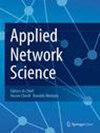Decentralizing the lightning network: a score-based recommendation strategy for the autopilot system
IF 1.5
Q3 COMPUTER SCIENCE, THEORY & METHODS
引用次数: 0
Abstract
Abstract The fundamental objective of the Lightning Network is to establish a decentralized platform for scaling the Bitcoin network and facilitating high-throughput micropayments. However, this network has gradually deviated from its decentralized topology since its operational inception, and its resources have quickly shifted towards centralization. The evolution of the network and the changes in its topology have been critically reviewed and criticized due to its increasing centralization. This study delves into the network’s topology and the reasons behind its centralized evolution. We explain the incentives of various participating nodes in the network and propose a score-based strategy for the Lightning Autopilot system, which is responsible for automatically establishing new payment channels for the nodes joining the network. Our study demonstrates that utilizing the proposed strategy could significantly aid in reducing the network’s centralization. This strategy is grounded in qualitative labeling of network nodes based on topological and protocol features, followed by the creation of a scoring and recommendation model. Results of the experiments indicate that in the evolved network using the proposed strategy, concentration indicators such as the Gini coefficient can decrease by up to 17%, and channels ownership of the top 1% of hubs decrease by 27% compared to other autopilot strategies. Moreover, through simulated targeted attacks on hubs and channels, it is shown that by adopting the proposed strategy, the network’s resilience is increased compared to the existing autopilot strategies for evolved networks. The proposed method from this research can also be integrated into operational Lightning clients and potentially replace the current recommendation methods used in Lightning Autopilot.去中心化闪电网络:自动驾驶系统的基于分数的推荐策略
闪电网络的基本目标是建立一个去中心化的平台,用于扩展比特币网络,促进高吞吐量的小额支付。然而,该网络自运营以来逐渐偏离了其分散的拓扑结构,其资源迅速转向集中。由于其日益集中,网络的演变及其拓扑结构的变化受到了严格的审查和批评。本研究深入探讨了网络的拓扑结构及其集中演变背后的原因。我们解释了网络中各个参与节点的动机,并为闪电自动驾驶系统提出了一种基于分数的策略,该策略负责为加入网络的节点自动建立新的支付通道。我们的研究表明,利用所提出的策略可以显着帮助减少网络的集中化。该策略的基础是基于拓扑和协议特征对网络节点进行定性标记,然后创建评分和推荐模型。实验结果表明,与其他自动驾驶策略相比,在使用该策略的进化网络中,集中度指标(如基尼系数)可以降低高达17%,前1%的枢纽通道拥有量降低27%。此外,通过对集线器和通道的模拟目标攻击表明,与现有的进化网络自动驾驶策略相比,采用所提出的策略可以提高网络的弹性。本研究提出的方法也可以集成到可操作的闪电客户端中,并有可能取代闪电自动驾驶仪中使用的当前推荐方法。
本文章由计算机程序翻译,如有差异,请以英文原文为准。
求助全文
约1分钟内获得全文
求助全文
来源期刊

Applied Network Science
Multidisciplinary-Multidisciplinary
CiteScore
4.60
自引率
4.50%
发文量
74
审稿时长
5 weeks
 求助内容:
求助内容: 应助结果提醒方式:
应助结果提醒方式:


